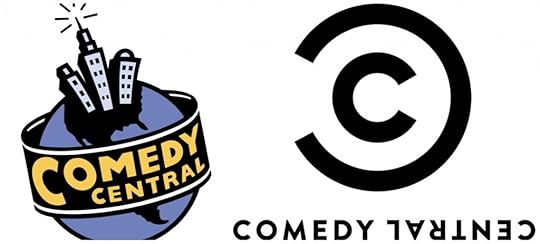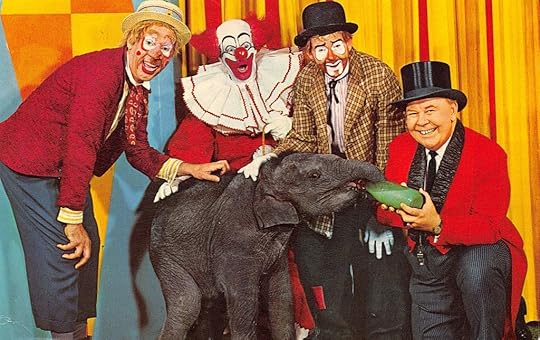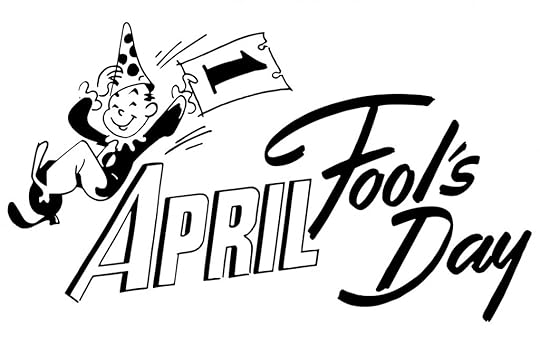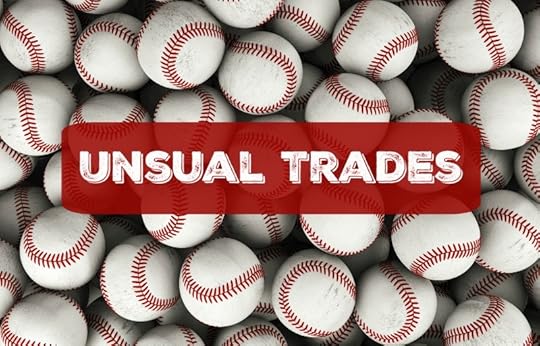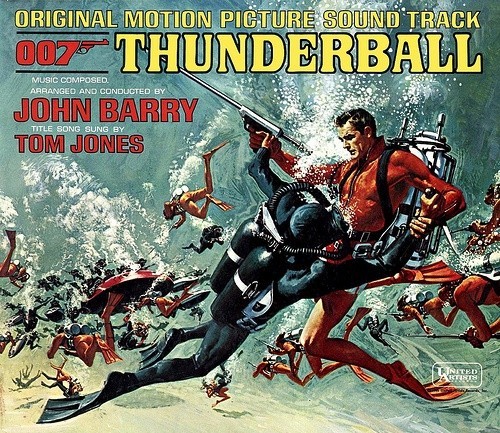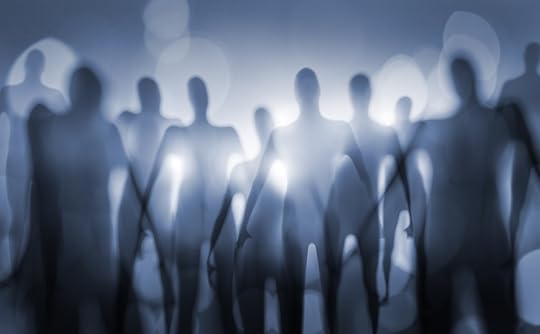Bathroom Readers' Institute's Blog, page 87
April 8, 2016
22 Celebrities And Their First Jobs
Celebrities, politicians, and captains of industry had to start somewhere. Turns out they pretty much started out with the same lame jobs as the rest of us.
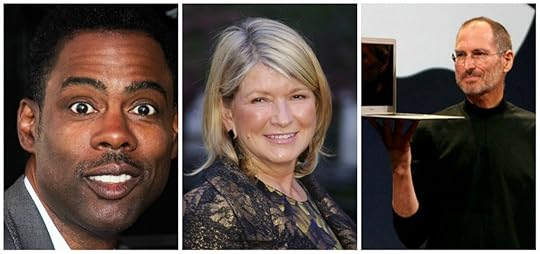
Steve Jobs, CEO of Apple Computer, was a summer intern at Hewlett-Packard.
J. K. Rowling worked for Amnesty International.
Chris Rock was a busboy at a Red Lobster.
Martha Stewart worked at the New York Stock Exchange.
Jim Carrey got a job as a janitor at a tire factory when he was 15.
Michael Dell, founder of Dell computers, washed dishes in a Chinese restaurant.
Suze Orman, financial guru and author of The Road to Wealth, trimmed eucalyptus trees with a chainsaw.
Steve McQueen was a towel boy…in a brothel.
Johnny Depp was the lead singer of a Kiss tribute band.
Danny DeVito was a hairdresser at his sister’s salon.
Madeleine Albright worked at Jocelyn’s, a Denver department store. (She sold bras.)
Nancy Grace (CNN) worked at the candy counter at Sears.
Bill Murray worked at a chestnut stand.
Rush Limbaugh shined shoes.
Bill Gates was a page in the Washington state capitol building.
Michael Douglas pumped gas.
Margaret Thatcher (former British prime minister) was a research chemist for a company called British Xylonite.
Quentin Tarantino was an usher at an adult movie theater.
Michael Jordan was a bellman.
Duke Ellington was a peanut vendor at Washington Senators baseball games.
Walt Disney mashed apples in a jelly factory.
Stephen King was a high school janitor.
The post 22 Celebrities And Their First Jobs appeared first on Trivia Books and Facts | Uncle John's Bathroom Reader.
April 7, 2016
Happy Birthday Comedy Central?
The comedy-only channel debuted 25 years ago this month. Since then it’s launched lots of iconic shows, including The Daily Show, South Park, and Inside Amy Schumer. Here are some short-lived Comedy Central shows that are…not so widely remembered.
Comics Only (1990)
This talk show hosted by stand-up comedian Paul Provenza only looked like a talk show. Suggested by the title, the only guests were stand-up comedians, and Provenza’s interview questions were all scripted, leading questions that the comedians would use to segue into bits from their act.
Crossballs (2004)
Airing after the cable news sendup The Daily Show, this show was a satire of cable news debate shows, like Crossfire or Hardball. (The title even combined those two shows’ names.) Each night, four improve comedians would play different debaters and square off against a real newsmaker or expert, unaware that they were sharing the panel with actors.
Lil’ Bush (2007)
An animated series that imagined then-President George W. Bush, and members of his administration (Dick Cheney, Condoleeza Rice) as children.
That’s My Bush! (2001)
Another series making fun of George W. Bush, this series by South Park creators Trey Parker and Matt Stone presented life in the White House as a cheesy 1980s sitcom. Characters even included a sassy maid and a neighbor who dropped by unannounced. (The show was delayed for months due to the unclear results of the 2000 election. Had Al Gore won, the show would’ve been titled Everybody Loves Al.)
I’m With Busey (2003)
A reality series in which comedy writer Adam de la Peña follows around actor Gary Busey in his daily life, while Busey doles out life lessons and wisdom.
Halfway Home (2007)
A sitcom set in a halfway house for drug offenders.
The post Happy Birthday Comedy Central? appeared first on Trivia Books and Facts | Uncle John's Bathroom Reader.
April 4, 2016
Where Did It All Go?
This stuff used to be a part of everyday life. Now it’s gone. So where did it all go?
LOCAL KIDDIE TV SHOWS
From the late 1940s to the early 1970s, nearly every American television market had its own locally produced children’s shows. The format was pretty standard: a cowboy/clown/pirate/train engineer/mailman/ringmaster or a guy in an animal suit introduced games, contests, puppet shows, and cartoons. At the height of the era, there were more than 1,400 locally made kids’ shows nationwide—the shows were a cheap and easy way for stations to fill time in little-watched early-morning and late-afternoon hours. The advent of PBS’s all-educational children’s programming killed the cowboys and clowns. Concerned parents urged their kids to watch “educational” shows, such as Mr. Rogers’ Neighborhood, Sesame Street, and The Electric Company, instead.
SMOKING
It’s difficult today to imagine how prevalent smoking used to be. A common image of the 1950s: adults in suits and party dresses standing around at cocktail parties smoking cigarettes. People smoked in restaurants, airplanes, buses, offices, movie theaters. There was almost no place where smoking wasn’t allowed (other than hospitals and elementary schools). Then in 1964, surgeon general Luther Terry announced that doctors had linked smoking with lung cancer. The next year, cigarette packs began to carry a health warning. Smoking has been in decline ever since. In 1964, 40% of American adults smoked. By 2006 only 19% did. It’s now banned in public places (even bars) in most major cities, including Los Angeles, Houston, and New York City.
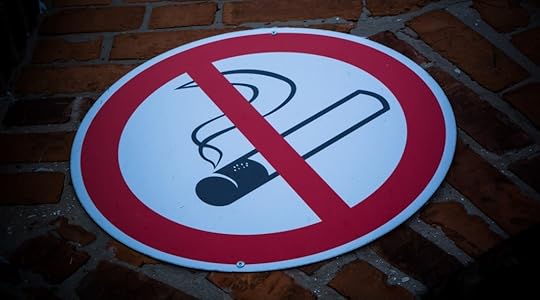
PAPERBOYS
The job evolved from newsies—

boys of the 1920s and 1930s who hawked papers on city street corners. When the population re-centralized from cities to suburbs, newsies became paperboys. It’s part of an iconic American image: The sun rises, the birds chirp, and the paperboy tosses a newspaper on the porch as he zooms by on his bike. In the mid-20th century, a paper route was often the first paying job for kids as young as nine. But there are still suburbs, and people still read newspapers. So what happened to paperboys?
Most daily papers today are morning papers. Few kids are willing to work at 5:00 a.m. (for $5 an hour), and parents won’t let them work the streets in the dark (on bikes). The Newspaper Association of America says that 81% of carriers are now adults with cars, who can deliver papers faster anyway.
HIT SHOW TUNES
Many of the biggest pop songs of the 1930s, 1940s, and 1950s— including classics like “Some Enchanted Evening” and “You’re the Top”—originated in Broadway musicals, such as South Pacific and Anything Goes. Top composers like the Gershwins, Rodgers and Hammerstein, and Cole Porter wrote for Broadway because it was the best-paying venue available to them. Even into the rock ’n’ roll era, The Ed Sullivan Show still featured performances from a Broadway cast almost every week. And rock music didn’t kill show tunes, either—Louis Armstrong’s “Hello, Dolly” knocked the Beatles out of the No. 1 spot in 1964. What really killed Broadway was Broadway—show tunes didn’t keep up with contemporary musical trends. Major composers gravitated toward movie and TV scores, which are less risky and more lucrative than Broadway. The last hit song from a stage musical was “One Night in Bangkok” by Murray Head, from the 1986 musical Chess.
VIDEO ARCADES
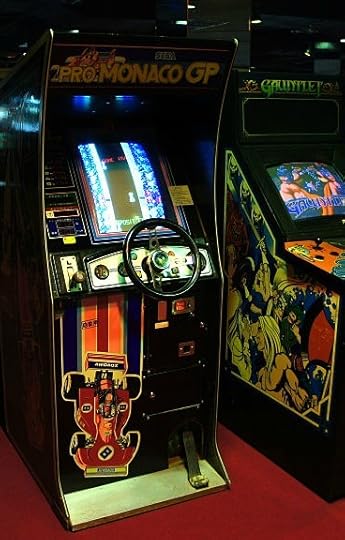
In the late 1970s and early 1980s, the only place to play video games like Pac-Man and Donkey Kong was at a video arcade. They were popular hangouts for teenagers, which invited criticism from parents’ groups—arcades were viewed as poorly lit dens of iniquity where kids could easily skip school and waste money (many arcades had truant officers on the premises). Even when home systems like Atari and Nintendo hit the market, arcade games remained profitable because they had much better graphics than the home versions. But by the mid-1990s, game systems like the Sony PlayStation had graphics equal (or superior) to those of the arcade machines. By then, arcades were on their way out.
The post Where Did It All Go? appeared first on Trivia Books and Facts | Uncle John's Bathroom Reader.
Weird April “Holidays” You Ought to Celebrate
April Fool’s isn’t the only bizarre holiday in April! All of these weird observances are real. (Really.)
April 6: New Beers Eve
Just before Prohibition was repealed in the U.S., Congress showed a major tell: It passed the Cullen-Harrison Act, re-legalizing production of beer (so long as the beer was no more than 3.2 percent alcohol by weight). That act passed on April 7 making April 6…New Beers Eve. (Get it?)
April 20: Lima Bean Respect Day
Did you hate eating lima beans as a kid? Now that you’re an adult, you should probably eat them, or at least “respect” them, due to the fact that they’re rich in protein, zinc, potassium, magnesium, and iron.
April 29: National Hairball Awareness Day
It sounds like a joke, but hairballs are a serious problem if you’re a cat (or a cat owner). Proprietors of this holiday think it’s a purrrrrfect time to adopt new grooming techniques, such as more frequent brushing, to prevent your cat from coughing up hairballs.
April 30: Bugs Bunny Day
What’s up, doc? An early version of Bugs Bunny first appeared in the Warner Bros. cartoon short “Porky’s Hare Hunt.” It hit movie theaters on April 30, 1938.
The post Weird April “Holidays” You Ought to Celebrate appeared first on Trivia Books and Facts | Uncle John's Bathroom Reader.
April 1, 2016
3 Epic April Fool’s Day Pranks
April Fool’s is a holiday to play harmless jokes on your friends. Here are some that weren’t so innocent.
In 1998, Babil, an Iraqi newspaper ran a front page story announcing that the U.S. had lifted sanctions against Iraq, which could lead to all kinds of humanitarian aid pouring into the country. The headline on page two: “April Fools’! It is the beginning of spring. Many happy returns!” Babil, by the way, was owned by dictator Saddam Hussein’s son, Uday. (The paper repeated the prank in 2000.)
In 2004, a New York man named Randy Wood called his ex-wife and asked her to come over to see something. What she saw: Wood hanging from a noose on a tree in the front yard. The horrified woman called 911 and police and emergency crews arrived, only to find that Wood had staged it all (he was wearing a harness) as an April Fool’s Day joke. No joke: He was fined $1,000 for improper summoning of emergency services.
The heavy metal band Tool has sold millions of albums, but they haven’t released any music since 2006. Rumored to be recording an album in 2005, on April 1 of that year they posted a statement on their Facebook page reporting that a clip of their new material had been leaked. “We don’t encourage anyone to listen because it’s far from finished and it will spoil what’s to come.” And then they posted it anyway…which is clearly not a clip of their new album,.
The post 3 Epic April Fool’s Day Pranks appeared first on Trivia Books and Facts | Uncle John's Bathroom Reader.
March 31, 2016
Two Baseball Myth-Conceptions
Here are two quick myths common to baseball, and the facts behind them.
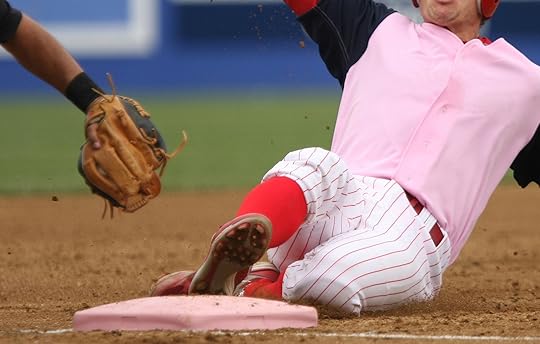
Myth #1:
The tie goes to the runner.
Fact:
Actually, the opposite is true, according to major league umpire Tim McClelland. “There is no rule that says the tie goes to the runner. But the rule book does say that the runner must beat the ball to first base, and so if he doesn’t beat the ball, then he is out.”
Myth #2:
A player must touch the ball to be charged with an error.
Fact:
It’s false, although you wouldn’t know it by listening to most baseball analysts during game broadcasts. For some reason, this myth begins in Little League and sticks with players all the way up to the bigs. However, it says clearly near the beginning of rule 10.13: “It is not necessary that the fielder touch the ball to be charged with an error.”
The post Two Baseball Myth-Conceptions appeared first on Trivia Books and Facts | Uncle John's Bathroom Reader.
March 29, 2016
I’ll Trade You A… (Unusual Trades)
In the trade-crazy world of professional sports, some trades still stand out as being…unusually unusual.
BEER FOR A PITCHER:
Pitcher Nigel Thatch of the Schaumburg Flyers of the Northern League, a professional baseball league in the northern United States and Canada, was traded in May 2006. The Flyers, according to the official league announcement, “assigned the contract of RHP Nigel Thatch (Rookie) to Fullerton of the Golden Baseball League in exchange for one pallet (60 cases) of Budweiser beer.”
…ANNOUNCER FOR A CARTOON CHARACTER:
In 2006 NBC took over the Sunday night TV broadcasts of NFL games. They wanted Al Michaels, who had been with ABC for 26 years and the announcer for Monday Night Football for 10, to host the show. The Walt Disney Company, who owned ABC, wanted something unusual in return for Michaels: 26 Oswald the Lucky Rabbit cartoons that Walt Disney made in 1927. He’d done them for Universal Studios, so he never owned the rights to them, which is why he created Mickey Mouse (the two characters look very similar). Disney had always wanted the rights back, and NBC now owned Universal, so they agreed to trade the rights to Michaels…for the rights to Oswald.
…BALLS FOR A BALLPLAYER:
In 1989 pitcher Tim Fortugno was traded by the minor-league Reno Silver Sox to the Milwaukee Brewers organization for $2,500…and 144 baseballs.
…CATCHER FOR HIMSELF:
Harry Chiti was a journeyman catcher who played for the Chicago Cubs, Kansas City Athletics, Detroit Tigers, and New York Mets in the 1950s and ’60s. His career statistics are unimpressive, but he does hold claim to one fascinating piece of baseball history. In 1962 the New York Mets bought the rights to Chiti from the Cleveland Indians for “a player to be named later in the season.” The Mets then traded him back to Cleveland. So the player the Indians ended up getting later in the season: Harry Chiti.
The post I’ll Trade You A… (Unusual Trades) appeared first on Trivia Books and Facts | Uncle John's Bathroom Reader.
March 28, 2016
5 Songs Written For Movies That Were Left Out of the Movie
Music is a big part of the movies…except when the song gets cut out entirely.
Producers of the 1965 James Bond movie Thunderball couldn’t make up their minds on a title song. After rejecting “Mr. Kiss Kiss, Bang Bang” by Shirley Bassey (who had done “Goldfinger” for Goldfinger), they asked Dionne Warwick to re-record it. Studio United Artists rejected both renditions, because they wanted the song to have the same name as the movie, for marketing purposes. Filmmakers went in the complete opposite direction and commissioned Johnny Cash to write “Thunderball.” Ultimately a different “Thunderball,” recorded by Tom Jones, was used.
In 2012, it was reported that British pop star Ed Sheeran had recorded and submitted an unnamed song for use in The Hunger Games: Catching Fire. But no song by Sheeran appeared in that movie. But in 2012 a Sheeran song called “I See Fire” appeared on the soundtrack for The Hobbit: The Desolation of Smaug.
At the behest of director Quentin Tarantino, R&B star Frank Ocean wrote a ballad called “Wise Man” to be used in the 2012 movie Django Unchained. While Tarantino called the song “truly lovely and poetic,” it was a little too lovely and poetic, because he couldn’t find a place for it in the action-heavy drama.
“Lay Lady Lay” is one of the best known songs ever recorded by Bob Dylan. It was actually written for the 1969 Oscar-winning movie Midnight Cowboy. But Dylan didn’t finish recording it in time for use in the film, so filmmakers went with Nilsson’s version of “Everybody’s Talkin’” instead.
It’s not often that a Beatle gets rejected. But in 1978, Paul McCartney’s band Wings recorded an ultimately unused title theme for the Alan Alda movie Same Time Next Year. Then Wings wrote “Did We Meet Somewhere Before” for use in Warren Beatty’s remake of Heaven Can Wait. Beatty turned it down, but then McCartney struck a deal with director Allan Arkush: He could use “Did We Meet Somewhere Before” in his Ramones-starring movie Rock ‘n’ Roll High School, for just $500 and no on-screen credit for Wings, because to do so would be a violation of a record contract.
The post 5 Songs Written For Movies That Were Left Out of the Movie appeared first on Trivia Books and Facts | Uncle John's Bathroom Reader.
Weird Ghosts
You might not want to read this page with the lights out.
WANDERING SOLES
Employees at a store in Cornwall, England, claim a ghost has taken up residence in the shop. And the ghost, they say, is obsessed with shoes. “I was standing at the counter,” says a salesclerk named Helen Honey, “when the top shelf of the display began wobbling. Then a pair of deck shoes jumped off the shelf and landed next to each other. I ran out of the shop, screaming.” Locals say the ghost is a former owner of the shop, a butcher, who died in the 1800s.
MOO!
Residents of Culver, Oregon, have reported driving a winding section of Highway 97 at night and seeing phantom cows appear suddenly in front of them. The ghost cows have glowing green eyes, and the cars pass right through them. (Moo-ha-ha!)
SCARE-A-VISION
Tracey Taylor of Lower Ince, England, is convinced that her television is haunted. She took a picture of her two-year-old daughter Faith dusting the TV set, and when she got the photos developed, she noticed a mysterious “face” on the screen…even though the set was off. It wasn’t a reflection because there was nobody else in the room. Who was it? When Tracey showed the photo to Faith, the child said, “That’s Ben.”
POLTER-BARF
Indiana State University students report seeing a female ghost in their dormitory. What does it do? It throws up. According to folklore professor Nan McEntire, “Barfing Barb,” as she’s known, has been in the building for decades. Local legend says she’s the spirit of a student who died after a night of drinking.
MEDIUM RARE
Ercy Cardoso of Viamao, Brazil, was shot and killed in 2003. His girlfriend, Iara Barcelos, was charged with the crime but ultimately acquitted thanks to an unusual witness: a medium hired by Barcelos said Cardoso’s ghost appeared to him and dictated two letters swearing to Barcelos’s innocence. A spokesman for the court said the ghost’s testimony was accepted as evidence because the prosecution never registered an objection.
The post Weird Ghosts appeared first on Trivia Books and Facts | Uncle John's Bathroom Reader.
March 25, 2016
What They Did After They Ran For President (And Lost)
Of the two major party presidential candidates, one gets to be president and the runner-up…has to find something else to do.

Mitt Romney (2012)
A month after he lost to President Barack Obama, Romney joined the board of directors of the Marriott hotel chain, as well as a partner for a Boston capital investment firm that was owned by Tagg Romney, his son.
Adlai Stevenson (1952, 1956)
Stevenson was the Democratic nominee twice, and lost to Dwight Eisenhower twice. (He tried to run again in 1960 but was defeated in the primaries by John F. Kennedy.) In 1957 he started law firms in Washington, D.C. and New York, and then served as a legal consultant to the Encyclopedia Britannica. From 1960 until his death five years later, Stevenson was the United States’ ambassador to the United Nations.
Bob Dole (1996)
Dole gave up a U.S. Senate seat he’d held for more than 25 years to run for president. After he lost, he became a commercial spokesman for Pepsi and Viagra. And along with another presidential also-ran (George McGovern, 1972), he founded the International Food for Education and Child Nutrition Program, which provides school lunches to children in more than 40 developing nations.
Walter Mondale (1984)
The former Vice President and Minnesota senator lost to popular president Ronald Reagan in a landslide, carrying only Washington, D.C. and his home state. Mondale then returned to Minnesota and practiced law until President Clinton named him the U.S.’s ambassador to Japan in 1993. In 2002, Mondale returned to politics, unsuccessfully running for his old Senate seat, which was vacant after Sen. Paul Wellstone died in a plane crash two weeks before a re-election bid.
The post What They Did After They Ran For President (And Lost) appeared first on Trivia Books and Facts | Uncle John's Bathroom Reader.


